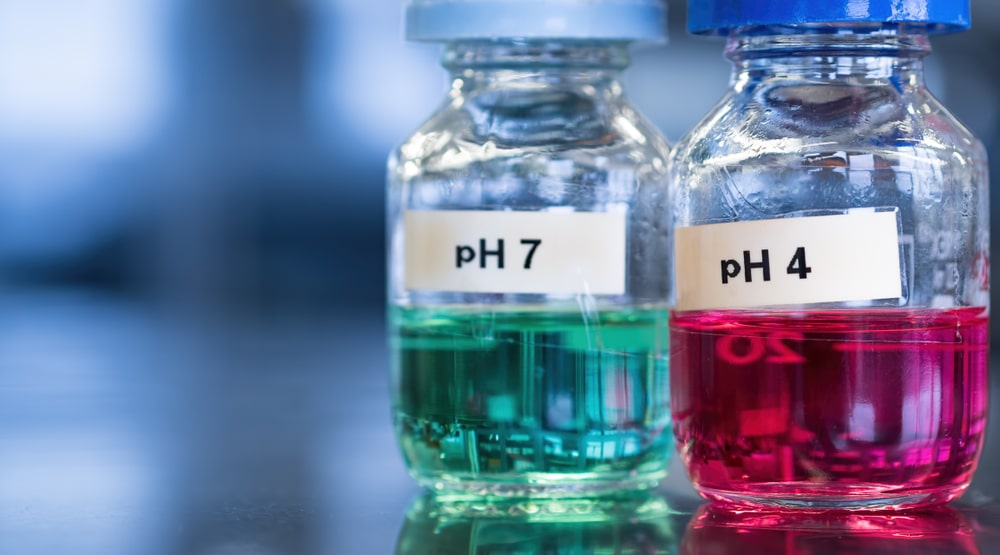Applications Of Buffers: Buffers are used in chemical analysis and calibration of pH measurement systems (an electrode and the meter). There can be small differences between the output of electrodes, as well as changes in the output over time. Therefore, the measurement system must be periodically calibrated. Most pH meters require calibration at several specific pH values. One calibration is usually performed near the isopotential point (the signal produced by an electrode at pH 7 is 0 mV at 25 °C), and a second is typically performed at either pH 4 or pH 10. It is best to select a buffer as close as possible to the actual pH value of the sample to be measured.

2. Buffers resistance to changes in pH makes these solutions very useful for chemical manufacturing and essential for many biochemical processes. The ideal buffer for a pH has a pKa equal to the pH desired since a solution of this buffer would contain equal amounts of acid and base and be in the middle of the range of buffer capacity.
3. Buffer solutions are necessary to keep the correct pH for enzymes in many organisms to live. Many enzymes work only under very precise conditions; if the pH is too far, the enzymes slow or stop working and can denature, thus permanently disabling its catalytic activity. A buffer of carbonic acid (H2CO3) and bicarbonate (HCO– 3 ) present in blood plasma, help to maintain a pH between 7.35 and 7.45. Pepsin is another example that shows maximum activity at pH 1.5.
4. Industrially, buffer solutions are used in fermentation processes.
5. Buffers can also be used to maintain the drug in its ionized as well as unionized form. The ionized form of a drug is more water-soluble than the unionized form. Buffers can be used to maintain a drug in its ionized (salt) form for aqueous solutions. The unionized form of a drug is more lipid-soluble than the ionized form. The unionized form, therefore, penetrates biological membranes much more efficiently than the ionized form.
6. Amphoteric compounds are least soluble at isoelectric points. Substances such as proteins are purified based on this fact. Buffers are useful in maintaining the isoelectric pH. For example, insulin gets precipitated in the pH range of 5 to 6 and hence buffers are used for its purification.
7. The pH can affect the stability of a drug in an aqueous solution. For example, ester drugs are very susceptible to hydrolytic reactions. Buffering formulations at low pH (pH 3-5) can reduce the rate of hydrolysis. Buffers also help to improve aspartame stability. Other examples are the alkaline instability of penicillin and ascorbic acid.
8. High or low pH can cause tissue irritation. The pH of formulation must match the pH of body fluids otherwise it may cause discomfort. Buffering a formulation to near neutral pH can reduce tissue irritation, for example, ophthalmic products are least irritating at pH 7 to 9. Other examples of discomfort are blood (hemolysis) and abraded surfaces (burning sensation). An extremely acid or alkaline pH must be avoided to reduce tissue damage.
9. Solubility of compounds can be controlled by providing a medium of suitable pH. For example, many organic salts such as Fe+3, phosphates, borates become soluble in acidic pH but precipitates in the alkaline pH range.
10. Buffers help to maintain texture in gelled products by controlled gelling. Controlled gelling reduces reaction rates and minimizes variation in pH. They are also used to prevent color and flavor in food changes in the beverage systems. For example, the red color of cherry and raspberry syrups has been maintained at acidic pH which becomes pale yellow to nearly colorless at alkaline pH.
Make sure you also check our other amazing Article on : Protein Binding